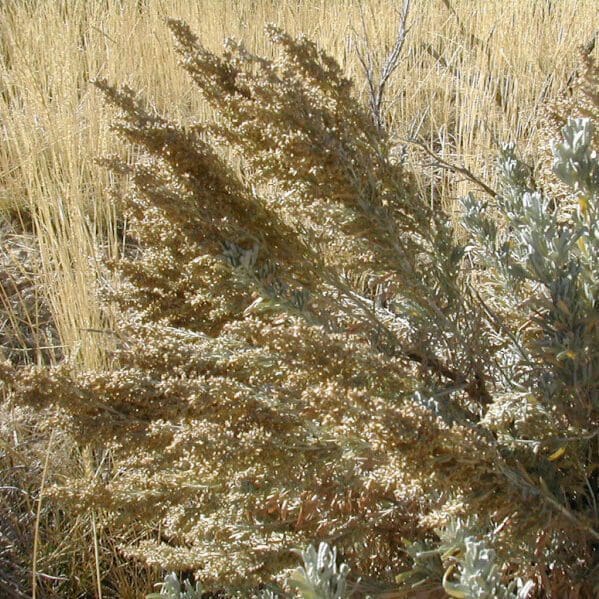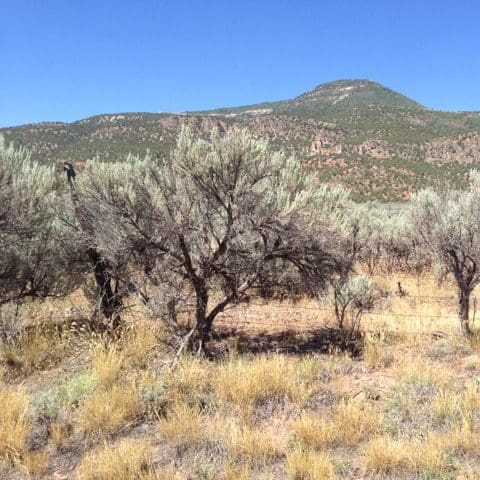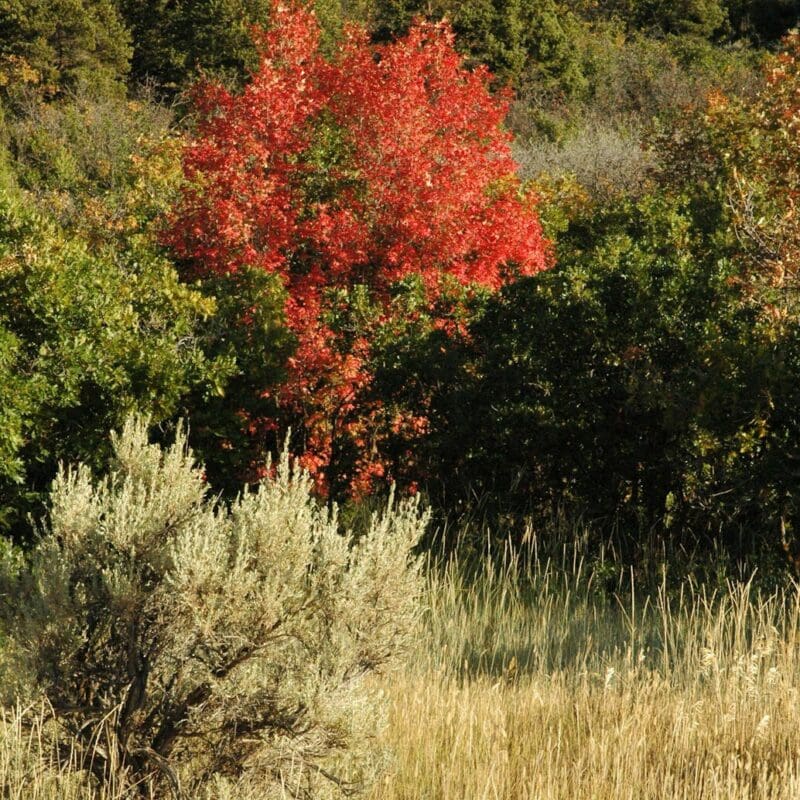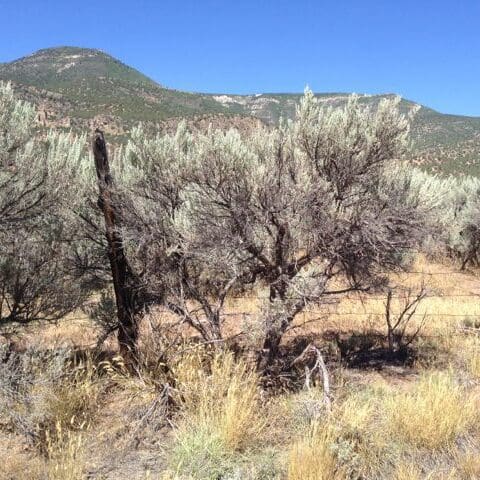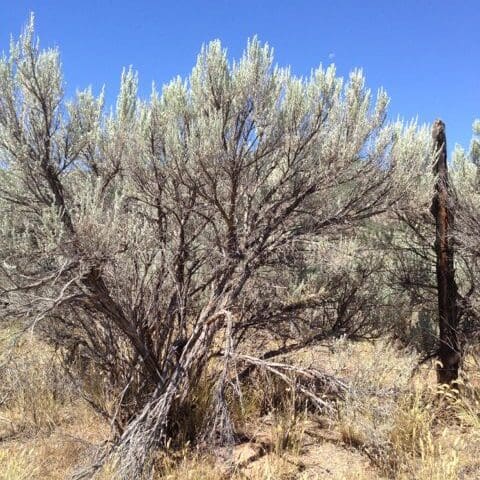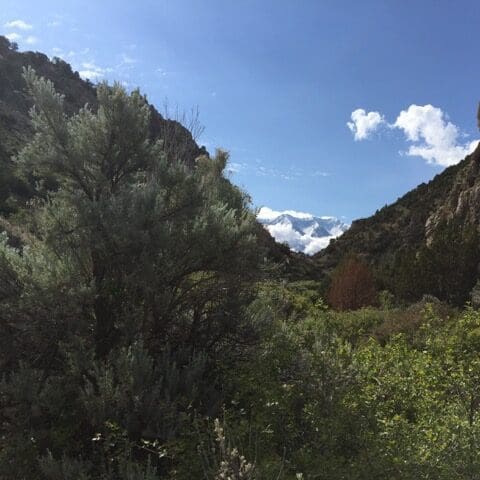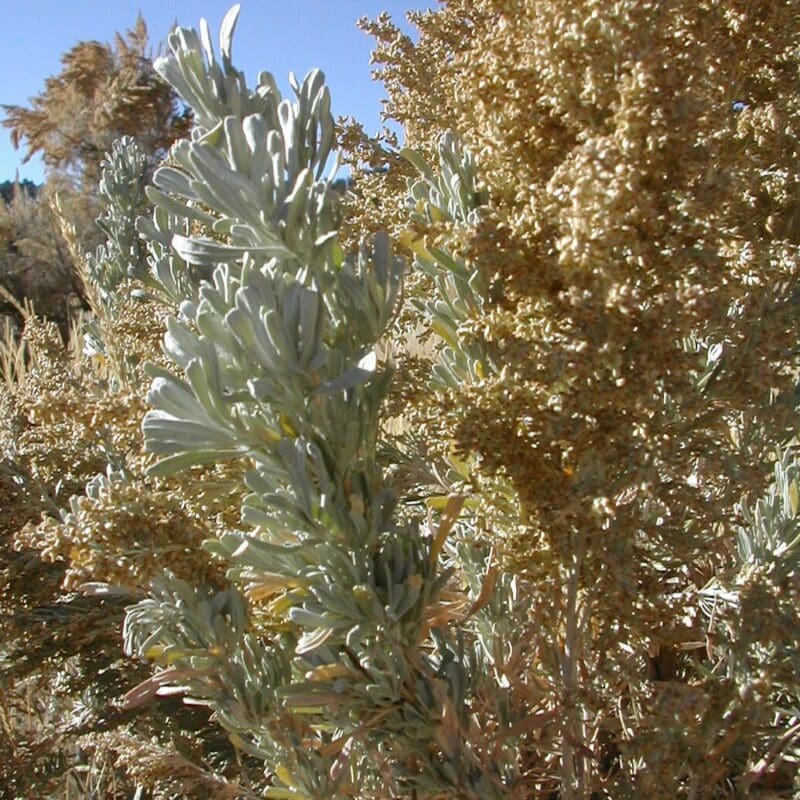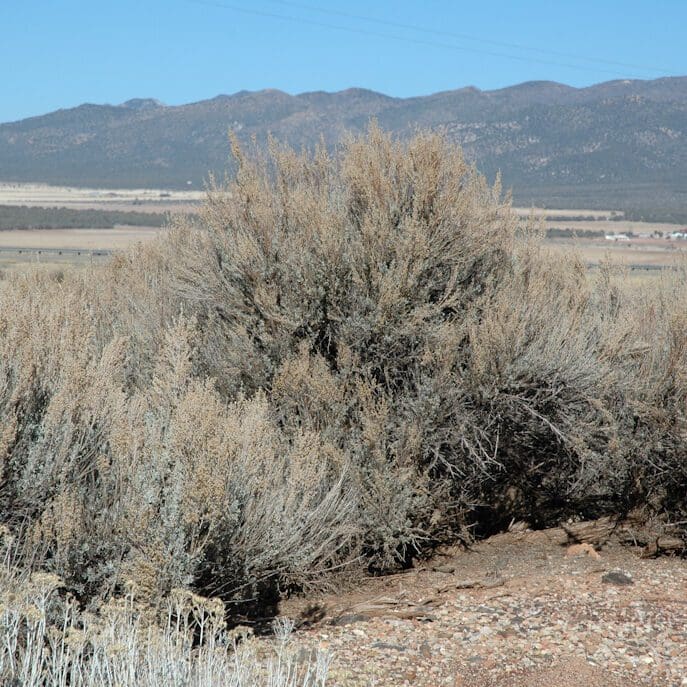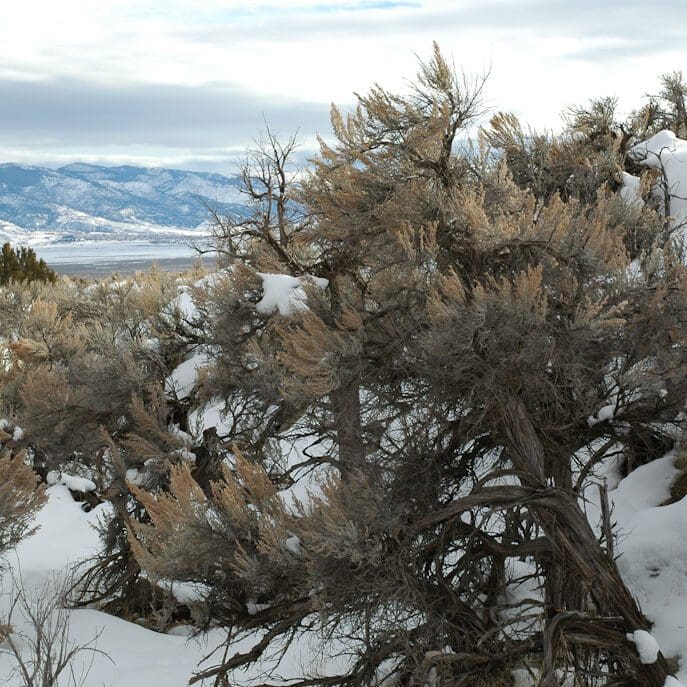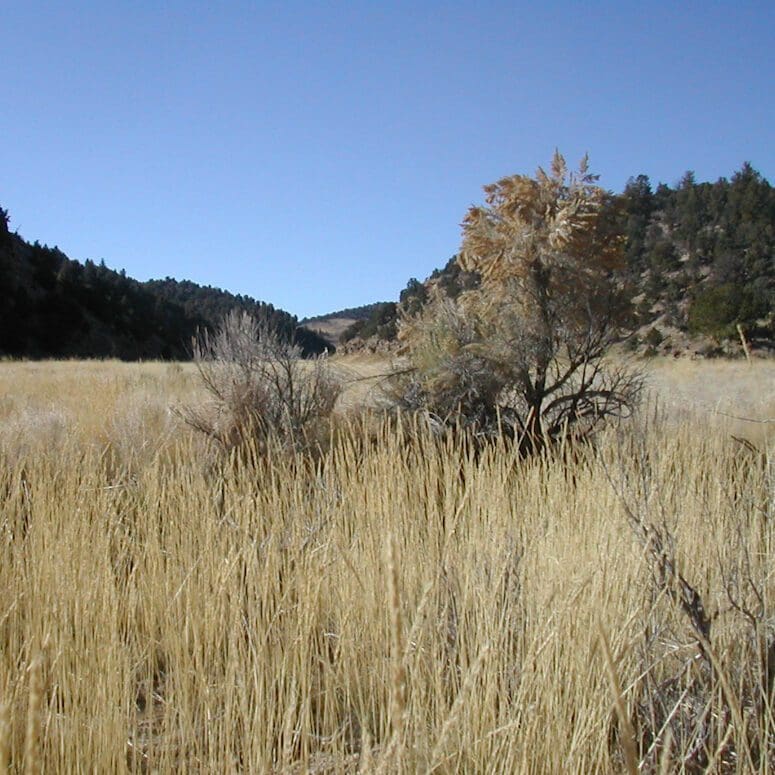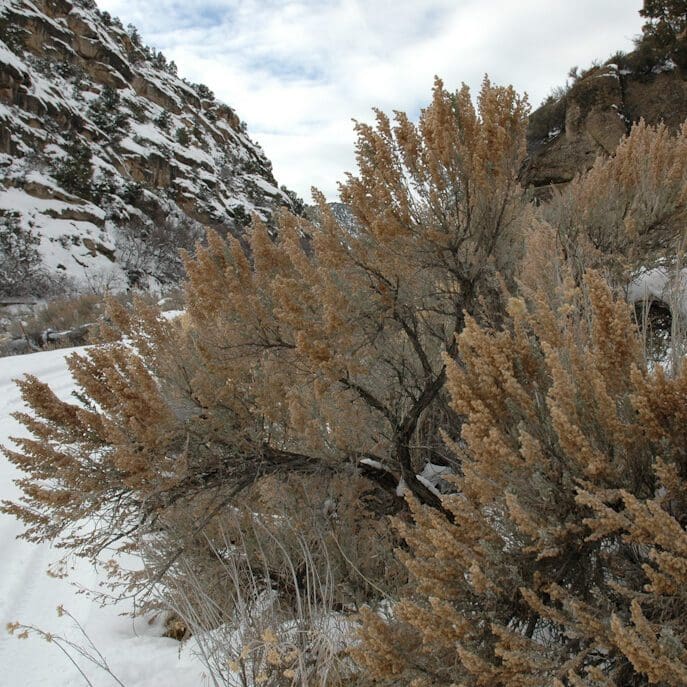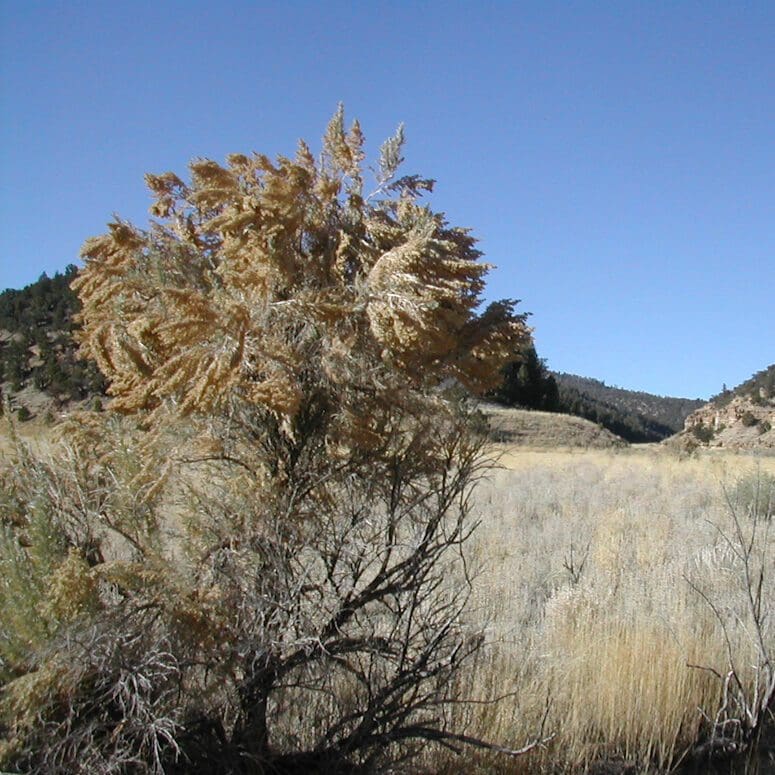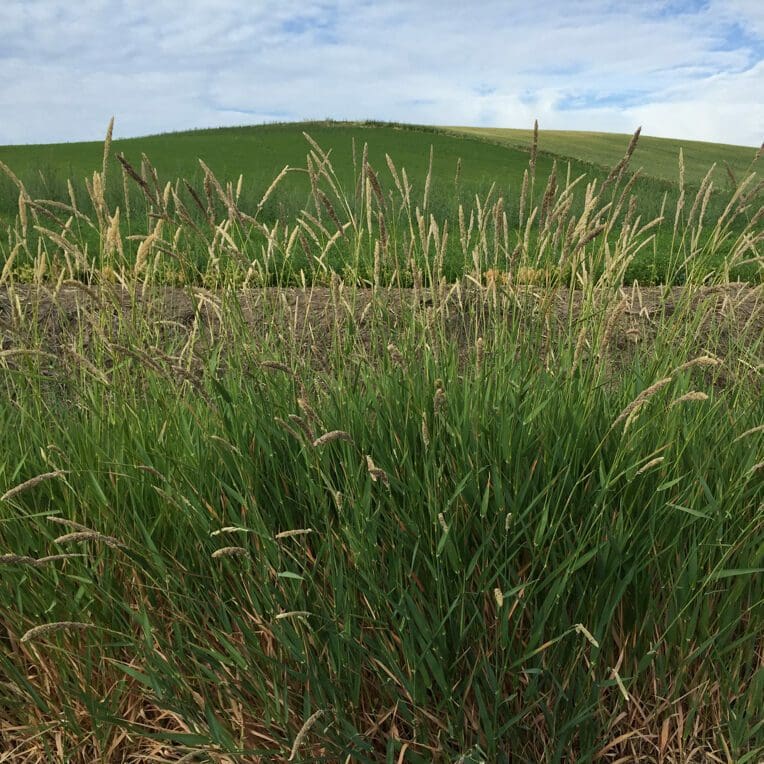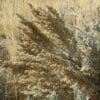



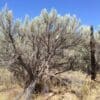

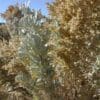
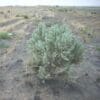
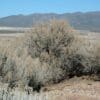
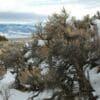
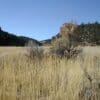
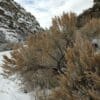
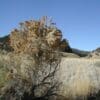
Basin Big Sagebrush
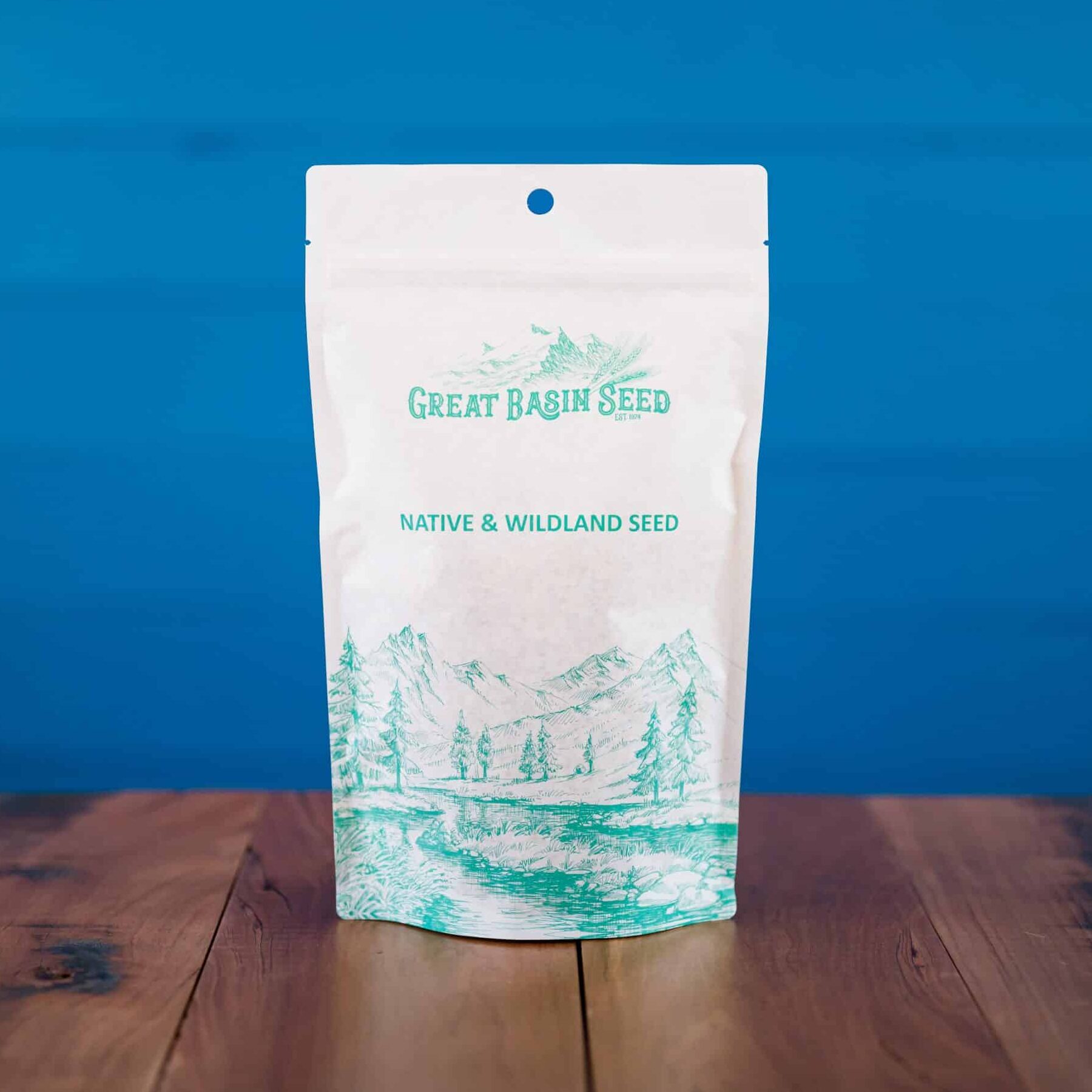 $4.65 – $18.52
$4.65 – $18.52 - Scientific name: Artemesia tridentata
- Abundant from valley bottoms to mountain foothills
- Occurs from 1,900 to 6,900 ft
- May grow to 13 ft. under proper conditions
- Prefers deep fertile loamy to sandy soil
- Grows in areas with 8″-16″ annual precipitation
- Important species in revegetation efforts
- Sage Grouse habitat species
Basin big sagebrush (Artemesia tridentata) usually occurs at the lowest elevational range of the Big Sagebrush species and is most abundant in valley bottoms to mountain foothills at low to mid elevations. Range of occurrence is usually 1,900 to 6,900 ft. Plants typically have a single main trunk and may grow to a height of 13 ft under proper conditions, making basin the largest subspecies. Basin big sagebrush plants (Artemesia tridentata) are generally uneven-topped with loosely branching flowering stems distributed throughout the crown. Big sagebrush is perhaps the most important shrub on western rangelands and is a highly valuable Sage Grouse habitat species.
It prefers deep fertile loamy to sandy soil, 3 ft or deeper. It is often the dominant shrub species of the plant community, but is also found in association with juniper, piñon pine and rabbitbrush communities. Basin big sagebrush has a deep penetrating root system that allows it to occupy deeper soils in areas receiving little precipitation. Plants are often found growing in valleys, plains, alluvial fans and in seasonal or perennial stream channels. Basin big sagebrush prefers soils which are non-alkaline, non-saline and non-calcareous. The deep root system does not allow plants to grow in soils with a soil depth limiting hardpan or caliche layer. Depending on soil infiltration and water storage capacity, plants will grow in areas receiving less than 8 to 16 in annual precipitation. This subspecies also does not tolerate soils saturated for more than a few weeks in a season.
Sagebrush plants maintain high levels of most nutrients including crude protein. This high forage value makes it especially useful for wildlife, and in some areas livestock, winter grazing. Deer and elk tend to prefer mountain big sagebrush followed by Wyoming big sagebrush and finally basin big sagebrush. Although many range managers believe that deer and other large mammals prefer to browse shrubby members of the Rosaceae such as mountain mahogany, bitterbrush and cliffrose over big sagebrush, studies show sagebrush significantly more readily browsed. Sagebrush’s value as thermal or security cover is also very high for wildlife. This includes nesting cover and escape cover for sage grouse, sharp tailed grouse, pheasants, chukar and other upland birds.
Because of its wide range of adaptation and ease of establishment, big sagebrush can be a very important species for use in revegetation efforts. Seedlings are able to compete with grasses and forbs as well as other shrubs allowing it to be used as a component of a wide range of seed mixes. Seedlings are very easy to establish when planted correctly and can be drill seeded or broadcast with near equal levels of success. Because sagebrush plants spread readily by seed, it can be seeded at relatively low rates and allowed to spread by natural recruitment.
Historically, sagebrush communities have been poorly managed, mostly in attempts to reduce or eliminate sagebrush stands to increase forage production for livestock. Recently, however, the value of sagebrush to the western rangelands is being recognized, and practices are evolving to better manage healthy and productive sagebrush communities.
Despite the many valuable benefits of sagebrush to rangelands, there may be cases when it is desirable to thin and rejuvenate sagebrush stands. In these instances it is not necessary to remove the entire stand, and control treatments in mosaic patterns are recommended. Several methods exist for partial removal of the shrubby over story.
Perhaps the greatest danger to sagebrush stands comes from fire. Big sagebrush plants have no fire resistance and many acres are destroyed annually because of increased fire frequency resulting from infestations of exotic annual weeds such as cheatgrass and medusahead. Big sagebrush is a highly valuable Sage Grouse habitat species.
***Click on the “Quick Plant Facts” tab above for more information.
Big Sagebrush NRCS Plant Guide and Fact Sheet
Big Sagebrush NRCS Plant Guide and Fact Sheet
PDF version of NRCS Plant Guide & Fact Sheet
Prepared By: Derek J. Tilley, Range Conservationist, USDA NRCS
Plant Materials Center, Aberdeen, Idaho
Dan Ogle, Plant Materials Specialist, USDA NRCS
Idaho State Office, Boise, Idaho
Loren St. John, Manager, USDA NRCS Plant
Materials Center, Aberdeen, Idaho
Brock Benson, Area Range Conservationist, USDA
NRCS, Ogden, Utah
Species Coordinator: Dan Ogle, Plant Materials Specialist, USDA NRCS
Idaho State Office, Boise, Idaho
Pocket Guide to Sagebrush
Pocket Guide to Sagebrush
PDF version of Point Blue Conservation Science
Prepared By: Leila Shultz, Utah State University
Illustrations By: Linda Ann Vorobik
Design & Layout By: Scott Gillihan
Helpful Links
Additional information about this product can be found on the academic websites linked below.
Synonyms
Many plants have more than one common and scientific name. We've listed a few of them below.
- Basin Big Sagebrush
- Artemisia tridentata
Who is Great Basin Seed?
Great Basin Seed is a seed company that specializes in seed sales and consultation for home, ranch, farm, range and reclamation. We have been a leader in the seed industry since 1974.
Our History
We've been in the seed business since 1974.
What We Offer
We offer seed for home, farm, ranch, range and reclamation projects.
Meet the Gang
We have the best employees in the world! We are proud of the work they do, and trust them to serve you!
Right: Company founder Lloyd and his wife Paula Stevens in a wildflower seed production field circa 1977
Quick Plant Facts
| Common Name: | Big Sagebrush, Great Basin Sagebrush |
|---|---|
| Scientific Name: | |
| Lifespan: | |
| Plant Type: | |
| pH Tolerance: | |
| Seed Count | 2500000 |
| Planting Rate: | |
| Min. Precipitation | 10 inches |
| Best Time to Sow: | |
| Growth Season: | |
| Sun & Shade Tolerance: | Full Sun |
| Hardiness Zones: | |
| Select a Package Size and Quantity | 2 oz. Pouch, 4 oz. Pouch (0.25 lbs.), 8 oz. Pouch (0.50 lbs.), 1 lb. (by the pound) |
